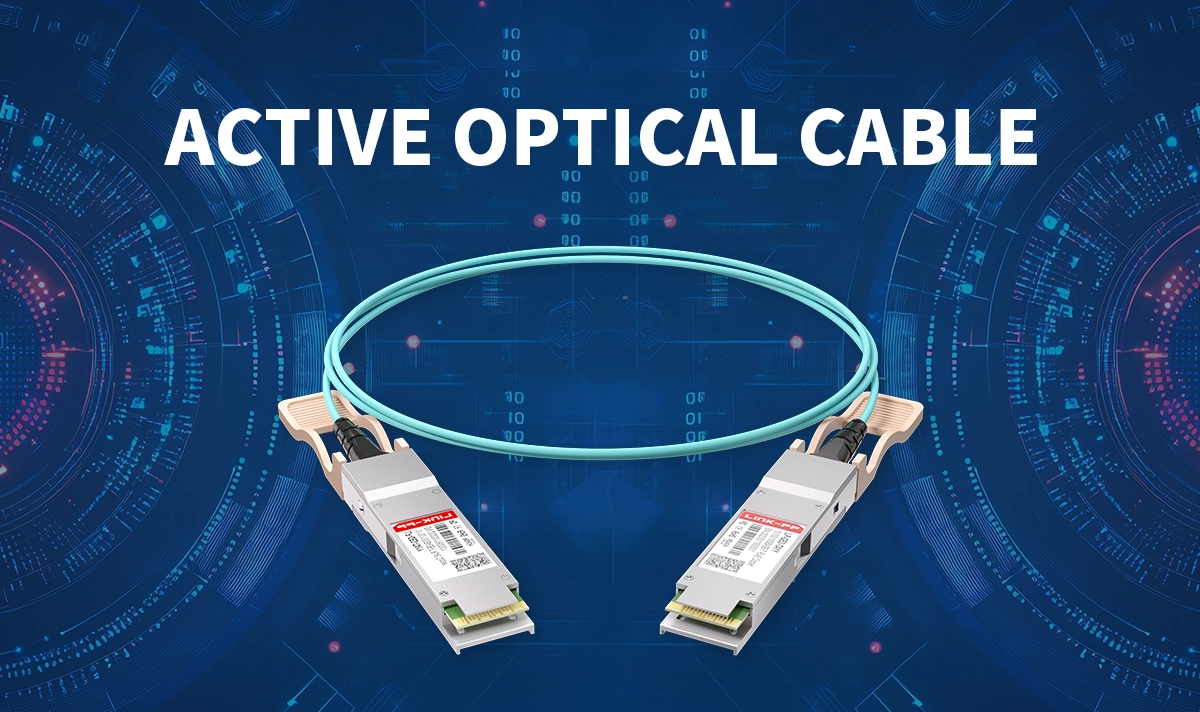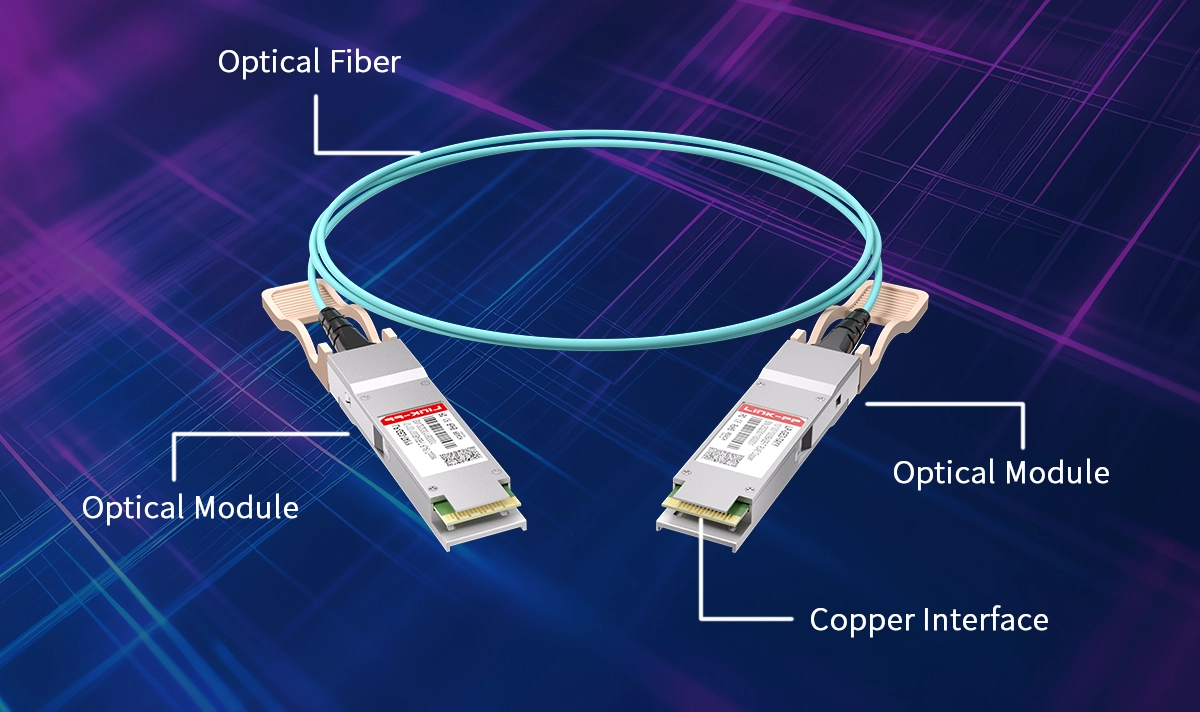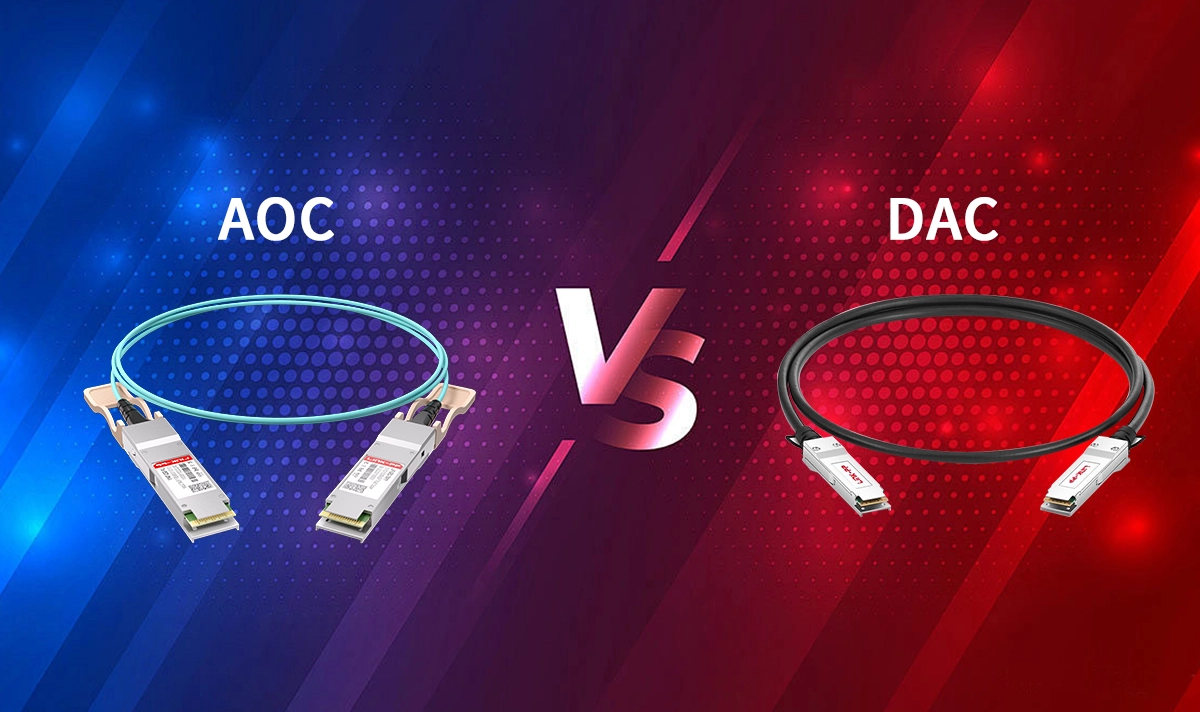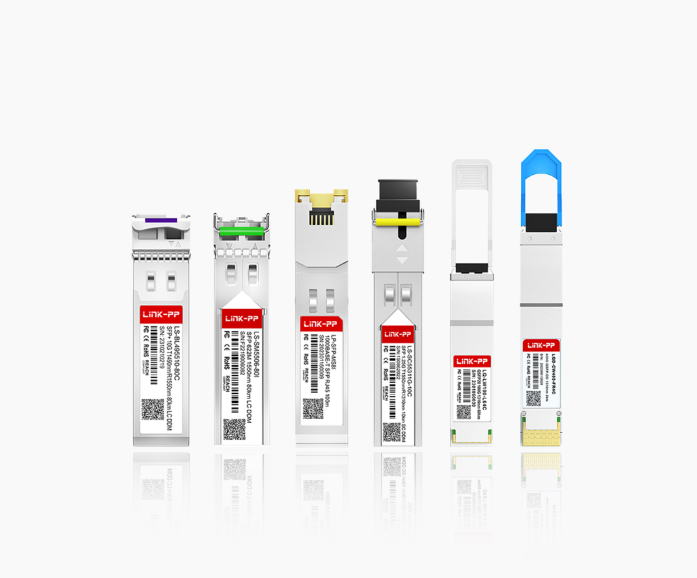
In today's data-driven world, where lightning-fast communication is non-negotiable, the humble cable plays a starring role. When traditional copper cables hit their physical limits, Active Optical Cables (AOCs) emerge as the superior solution for demanding, high-bandwidth applications. These change electrical signals into optical signals and back. The aoc active optical cable uses fiber to send signals far. This gives you fast and steady data transfer. AOC active optical cable can handle lots of data. It also cuts down on signal loss or interference. This makes it great for fast networks and big data centers. You can plug in an aoc active optical cable like a normal copper cable. But you get better cable management and it is easier to install. But what exactly is an AOC, and why is it becoming essential? Let's dive in.
➤ Key Takeaways
Active optical cables send data using light. They are faster and can go farther than copper cables.
Built-in transceivers change electrical signals into optical signals. This keeps data strong and steady. There is less interference.
AOCs are light and easy to bend. They are simple to set up. They help keep networks neat. They also help air move better in data centers.
These cables use less power, so they save energy. They block outside noise. This makes networks work better and more reliably.
AOCs work with many devices like servers, USB, HDMI, and DisplayPort. But you should always check if they fit your device before buying.
➤ AOC Active Optical Cable Structure

An aoc active optical cable has a clever build. There are two main ends on the cable. Each end holds an optical transceiver module. Inside, thin optical fibers run between the ends. These fibers send light signals back and forth. The cable also has optoelectronic devices inside. These devices switch signals from electrical to optical and back.
The cable is strong and bends easily. Its outer jacket keeps the fibers safe from harm. Connectors at each end fit into normal network ports. This makes the aoc active optical cable simple to use. You do not need special tools or adapters.
Note: New optoelectronic devices, like VCSEL arrays and silicon photonic circuits, make aoc active optical cables work better. These new parts help move more data at faster speeds.
➤ Beyond Copper: The Core Principle of Active Optical Cables
At its heart, an Active Optical Cable is a pre-terminated, single-unit assembly designed for high-speed data transmission. Unlike passive copper cables, AOCs fundamentally rely on optical transceiver technology integrated directly into the cable ends (connectors). Here's the key differentiator:
Electrical to Optical Conversion: At the transmitting end, an integrated optical transceiver module converts incoming electrical signals into pulses of light.
Light Transmission: This light travels over incredibly thin, flexible glass or plastic fibers within the cable. Optical fiber is immune to electromagnetic interference (EMI) and offers vastly superior bandwidth and distance capabilities compared to copper.
Optical to Electrical Conversion: At the receiving end, another integrated optical transceiver module detects the light pulses and converts them back into electrical signals for the receiving device.
The term "Active" signifies the need for power to drive these integrated electro-optical conversion components, typically drawn directly from the host device (like a switch, server, or GPU) via the data port.
You now know that AOCs give you fast, reliable data transfer over long distances. You get strong signal integrity and less interference, even when cables bend sharply. In data centers, AOCs work well for connections across racks and network areas. You should pick AOCs when you need high speed, long reach, and better durability than copper cables. Always check your devices and needs before you buy.
➤ Why Choose Active Optical Cables? Key Advantages
AOCs solve critical challenges faced by modern data centers, high-performance computing (HPC), financial networks, and professional AV setups:
High Bandwidth & Speed: Easily support multi-gigabit, 10G, 25G, 40G, 100G, 200G, 400G, and emerging 800G standards, far exceeding the reach and capability of passive copper cables at these speeds.
Longer Distances: Transmit data reliably over distances ranging from tens of meters to hundreds of meters (common reaches: 30m, 50m, 100m+) without signal degradation, where copper fails or requires bulky, expensive repeaters.
Immunity to EMI: Optical fibers are completely immune to electromagnetic interference and radio-frequency interference (RFI), crucial in electrically noisy environments or dense equipment racks. This ensures pristine signal integrity.
Lightweight & Flexible: Significantly lighter and thinner than equivalent copper cable bundles (like Cat6A/Cat7 for 10G), reducing cable tray weight, improving airflow for cooling, and simplifying installation in tight spaces.
Lower Latency: Offer extremely low signal propagation delay, critical for latency-sensitive applications like high-frequency trading, AI/ML clusters, and real-time video processing.
Reduced Power Consumption: Generally consume less power than alternative active solutions for similar reach and bandwidth, contributing to lower operating costs (OpEx) and a smaller carbon footprint.
Security: Fiber does not radiate signals, making it inherently more secure against eavesdropping compared to copper.
Plug-and-Play Simplicity: Pre-terminated and factory-tested, eliminating the complexity and potential errors of field termination required with traditional fiber optic cabling using separate optical transceivers and patch cables.
➤ AOC vs. DAC: When Optical Wins

Direct Attach Copper cables (DACs) are common for short, high-speed links within a rack. However, AOCs become the clear choice beyond very short distances or when specific advantages are paramount:
Feature | Active Optical Cable (AOC) | Direct Attach Copper (DAC) |
|---|---|---|
Signal Medium | Optical Fiber | Copper Twinax |
Max Distance | High (30m to 300m+) | Low (Typically ≤ 7m) |
Bandwidth Capacity | Very High (100G/200G/400G+) | High (Up to 400G, but short) |
EMI/RFI Immunity | Complete Immunity | Susceptible |
Weight | Lightweight & Thin | Heavier & Bulkier |
Flexibility | Highly Flexible | Less Flexible |
Power Consumption | Moderate | Very Low (Passive) |
Cost | Higher | Lower |
Ideal Use Case | Longer reach, EMI environments | Very short intra-rack links |
➤ Where Active Optical Cables Shine: Applications
Data Center Interconnects: Connecting top-of-rack (ToR) switches to end-of-row (EoR) or aggregation switches; linking servers to leaf/spine switches.
High-Performance Computing (HPC): Connecting compute nodes, storage arrays, and GPUs/accelerators within clusters demanding massive bandwidth and low latency.
Cloud Computing Infrastructure: Scalable connectivity for hyperscale data centers.
Enterprise Networking: High-speed backbone links between floors or buildings.
Professional Broadcast & AV: Reliable, high-bandwidth transmission for 4K/8K video, SDI-over-Fiber, KVM extenders.
Financial Networks: Ultra-low latency trading connections.
Telecom Central Offices: Equipment interconnections.
➤ LINK-PP: Your Trusted Partner for Reliable AOC Solutions

Choosing high-quality Active Optical Cables is critical for network performance and uptime. At LINK-PP, we specialize in manufacturing premium, rigorously tested AOCs designed for the most demanding environments.
We offer a comprehensive range of standard and custom AOC solutions featuring our high-performance optical transceiver technology, including popular industry form factors:
LINK-PP QSFP28 AOCs: The workhorse for 100G Ethernet (100G-SR4, etc.). (Model Example: LQ-AOC11100-3M)
LINK-PP QSFP56 AOCs: The workhorse for 200G Ethernet. (Model Example: LQ-AOC11200-10)
LINK-PP QSFP-DD AOCs: For cutting-edge 400G deployments. (Model Example: LQD-AOC12400-5M)
Our LINK-PP AOCs deliver exceptional signal integrity, low bit error rates (BER), and outstanding durability. We focus on active optical cable reliability and performance, ensuring seamless integration into your existing infrastructure.
Finding the Right LINK-PP Optical Transceiver Solution for Your Needs
Whether you need standard Active Optical Cable uses or custom-engineered solutions, LINK-PP has the expertise. Our range ensures you find the perfect optical transceiver integrated cable for your specific speed, reach, and connector requirements.
Ready to Experience the AOC Advantage?
Stop being limited by copper's constraints. Embrace the speed, distance, and reliability of Active Optical Cables.
Explore our full range of high-performance LINK-PP Active Optical Cables today and find the perfect solution for your high-bandwidth challenges!
Discover LINK-PP AOCs Now ➦
Need a Custom Solution? Contact Our Experts ➦
➤ Conclusion: The Clear Choice for High-Speed Connectivity
Active Optical Cables represent a sophisticated, high-performance solution for modern data transmission challenges. By integrating optical transceiver technology directly into a robust cable assembly, AOCs deliver unparalleled bandwidth, extended reach, EMI immunity, and physical advantages over traditional copper and even passive DACs. For applications demanding reliable, high-speed data transfer beyond a few meters, especially in dense or noisy environments, AOCs are not just an alternative; they are the optimal choice. Partnering with a trusted manufacturer like LINK-PP ensures you get the performance, quality, and active optical cable reliability your critical infrastructure demands. Invest in the future of connectivity – invest in Active Optical Cables.
➤ FAQ
What makes an active optical cable different from a copper cable?
You get faster speeds and longer distances with an active optical cable. The cable uses light instead of electricity to send data. This means you see less signal loss and almost no interference.
What devices can you connect with an active optical cable?
You can connect servers, switches, computers, TVs, and gaming systems. Many AOCs work with USB, HDMI, DisplayPort, and network ports. Always check your device’s port type before you buy.
What happens if you bend an active optical cable too much?
If you bend the cable too sharply, you might damage the fibers inside. This can cause signal loss or even break the cable. Look for bend-insensitive cables if you need to run them around tight corners.
What is the maximum length for an active optical cable?
Most active optical cables reach up to 100 meters. Some special models go even farther. You should always check the cable’s specs to make sure it fits your needs.
What should you check before buying an active optical cable?
Always check the connector type, supported speed, and cable length. Make sure the cable matches your device and network needs. This helps you avoid problems with compatibility.
➤ See Also
Exploring WDM Technology And Its Role In Optical Networks
The Importance Of TOSA Components In Optical Modules Explained
Why Digital Diagnostics Matter In Optical Transceiver Performance




